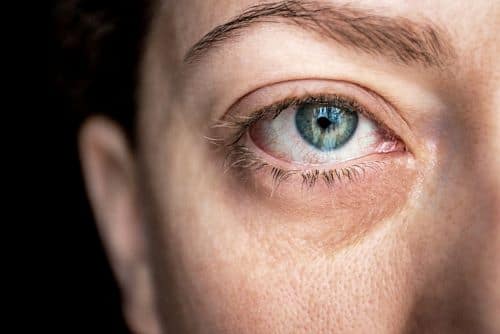It’s a fact of life…
As you get older, your eyes get weaker.
The first sign may be trouble reading small print. Then you may find your night vision fading.
Eventually, like so many other older Americans, you may end up with cataracts, glaucoma, or macular degeneration. All of these can lead to blindness.
More than 4 million Americans over age 40 are legally blind because of these conditions and others that worsen with age.[1]
The number one cause of blindness is glaucoma. It occurs when the nerve connecting the eye to the brain is damaged, usually due to high eye pressure.[2]
Glaucoma robs your sight silently. In its early stages, there are no symptoms. Then, when it does start to damage your vision, it may happen so slowly that you don’t even know it’s happening. And by then it’s too late.
The worst part? Glaucoma is irreversible.[3]
Now, a new study shows that a simple diet change may prevent the disease.
Researchers from New York’s Mount Sinai Health System analyzed 41 years of health and diet data from 185,000 people.
They found that people who stuck to a diet low in carbs and high in fat and protein had a 20% lower risk of primary open angle glaucoma (POAG). That’s the most common form of the condition.
Dr. Louis Pasquale was a coauthor of the study. He said a low-carb diet “results in the generation of metabolites” that protect the optic nerve head. That’s the area in the eyes that is damaged by POAG.
Dr. Pasquale said a low-carb diet won’t stop glaucoma progression if you already have it. But it may prevent the disease from starting in people at high risk for it. “If more patients in high-risk categories—including those with a family history of glaucoma—adhered to this diet, there might be fewer cases of vision loss,” he said.[4]
The research backs up finding from a 2012 study that showed people on a ketogenic diet have a lower risk for glaucoma.[5]
A ketogenic diet replaces carbs with fat. In addition to warding off glaucoma, it’s been shown to reverse diabetes.[6]
Low-Carb Diet Guidelines
Besides protecting your vision, research shows a low-carb diet can reverse brain aging. It lowers your risk of heart disease and diabetes.[7] [8]
Low-carb eating is simple:
- Avoid sugar and starchy foods like bread, pasta, rice, beans, and potatoes.
- Eat meat, fish, eggs, non-starchy vegetables, and natural fats like olive oil and butter.
- Fruits that are high in fiber and low in sugar are OK. They include berries, avocados, grapefruit, kiwis, pears, and watermelon. But avoid fruit juices. They are typically high in sugar.
The most important rule of low-carb eating? Avoid sugary foods and drinks that push insulin higher, especially soda.
For a ketogenic version of the diet, follow the same rules, but emphasize fats and avoid alcohol, which can take you out of ketosis.
With the eye protection it affords, there’s more reason than ever to swap carbs for fat and protein in your diet.
Editor’s Note: Discover the most effective natural methods to improve your health. Read our monthly journal Independent Healing. It’s your best source for unbiased, evidence-based medical information you won’t find anywhere else. To find out more, go HERE.
Related Articles
2 Nutrients Keep Your Eyesight Sharp
Low-Carb Diet Reverses Brain Aging, Study Finds
Low-Carb Benefits Go Beyond Weight Loss
Like this Article? Forward this article here or Share on Facebook.
[1]https://www.cdc.gov/visionhealth/basics/ced/index.html
[2]https://www.brightfocus.org/glaucoma/article/glaucoma-facts-figures
[3]https://www.glaucoma.org/gleams/what-are-the-symptoms-of-glaucoma.php
[4]https://consumer.healthday.com/senior-citizen-information-31/glaucoma-news-335/want-to-protect-your-eyes-as-you-age-stay-away-from-carbs-759652.html
[5]https://www.ncbi.nlm.nih.gov/pmc/articles/PMC3939735/
[6]https://www.aacc.org/meetings-and-events/2019-annual-meeting
[7]https://www.pnas.org/content/117/11/6170
[8]https://www.ncbi.nlm.nih.gov/pubmed/31217353

